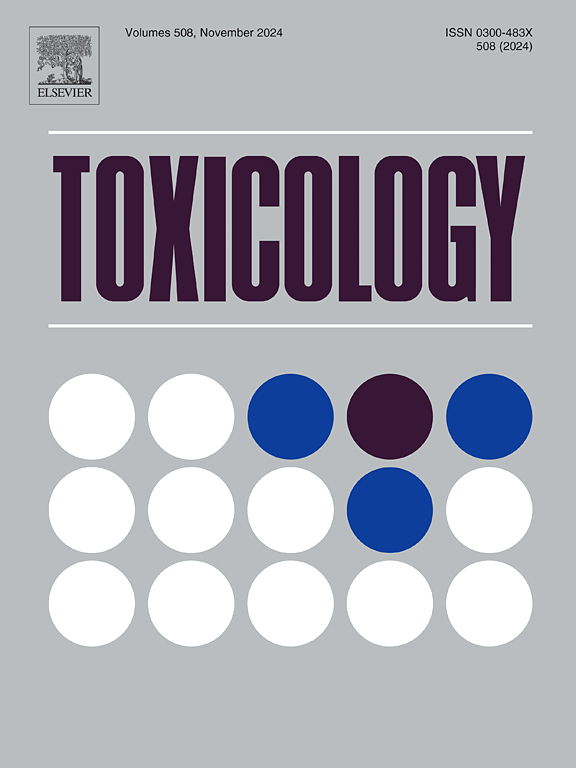Optimization of the drug-induced cholestasis index based on advanced modeling for predicting liver toxicity
IF 4.8
3区 医学
Q1 PHARMACOLOGY & PHARMACY
引用次数: 0
Abstract
Cholestatic drug-induced liver injury (cDILI) is a frequent reason for drug failure and withdrawal during premarketing and postmarketing stages of drug development. Strategies for reliable detection of cDILI in early drug development are therefore urgently needed. The drug-induced cholestasis index (DICI) concept was previously introduced as a tool for assessing the cholestatic potential of drug candidates. DICI is calculated as the ratio between the viability values obtained in drug-treated liver cells in the presence and absence of bile acids. The present in vitro study was set up to investigate the applicability of DICI in a novel high-throughput and large sample setting. Furthermore, the improvement of the predictivity of the DICI by introduction of advanced modeling was explored. Fifty-eight well-documented drugs were selected and categorized as drugs inducing cDILI, non-cholestatic DILI (ncDILI), and not inducing DILI (non-DILI). Cultures of human hepatoma HepaRG cells in 3D spheroid configuration were exposed to 9 half-log concentrations of each drug for 1, 3 and 7 days in the absence or presence of a concentrated mixture of human bile acids. The highest concentration of each drug was based on solubility and the maximum concentrations in human plasma (total Cmax). DICI values were computed for all drugs and time points. In addition, the area under the curve ratio and the occurrence of a trend in the cytotoxicity profiles were included as modeling descriptors. As such, 3 time-related scenarios were considered upon modeling, while categories were modeled on a nominal or an ordinal scale. Applying DICI with a cut-off value of 0.8 resulted in a high sensitivity for the cDILI class, but in turn, a low sensitivity for the non- DILI class. From the 28 predictive models generated, the best performing models integrated all descriptors and the ordinal scale for either the 7-day time point from a 3-time-point model or the 3-day time point. While these models were unable to accurately identify ncDILI drugs, the 7-day time point identified 84 % of the cDILI drugs and the 3-day time point correctly identified 94 % of non-DILI drugs. Based on the obtained results, it can be concluded that the reported DICI modeling provides an optimized approach that could be applied in an integrated DILI testing strategy
基于预测肝毒性先进模型的药物性胆汁淤积指数优化。
胆汁淤积性药物性肝损伤(cDILI)是药物上市前和上市后阶段药物失败和停药的常见原因。因此,迫切需要在早期药物开发中可靠检测cDILI的策略。药物诱导的胆汁淤积指数(DICI)概念以前被引入作为评估候选药物的胆汁淤积潜力的工具。DICI的计算是在胆汁酸存在和不存在的情况下,在药物处理的肝细胞中获得的活力值之间的比率。本体外研究旨在探讨DICI在新型高通量和大样本环境中的适用性。在此基础上,探讨了引入高级建模来提高DICI的预测能力。选择58种文献资料充分的药物,并将其分为诱导cDILI、非胆汁淤积性DILI (ncDILI)和不诱导DILI (non-DILI)。在没有或存在人胆汁酸的浓缩混合物的情况下,将培养成三维球形的人肝癌HepaRG细胞暴露于每种药物的9倍半对数浓度中1,3和7天。每种药物的最高浓度是基于溶解度和在人血浆中的最大浓度(总Cmax)。计算所有药物和时间点的DICI值。此外,曲线下面积比和细胞毒性曲线趋势的出现被作为建模描述符。因此,在建模时考虑了3种与时间相关的情景,而类别则在标称或序数尺度上建模。应用截断值为0.8的DICI导致cDILI类具有高灵敏度,但反过来,非DILI类具有低灵敏度。从生成的28个预测模型中,表现最好的模型集成了所有描述符和3天时间点模型的7天时间点或3天时间点的顺序尺度。虽然这些模型无法准确识别非dili药物,但7天时间点识别了84%的cDILI药物,3天时间点正确识别了94%的非dili药物。基于所获得的结果,可以得出结论,所报道的DICI建模提供了一种优化方法,可用于集成DILI测试策略。
本文章由计算机程序翻译,如有差异,请以英文原文为准。
求助全文
约1分钟内获得全文
求助全文
来源期刊

Toxicology
医学-毒理学
CiteScore
7.80
自引率
4.40%
发文量
222
审稿时长
23 days
期刊介绍:
Toxicology is an international, peer-reviewed journal that publishes only the highest quality original scientific research and critical reviews describing hypothesis-based investigations into mechanisms of toxicity associated with exposures to xenobiotic chemicals, particularly as it relates to human health. In this respect "mechanisms" is defined on both the macro (e.g. physiological, biological, kinetic, species, sex, etc.) and molecular (genomic, transcriptomic, metabolic, etc.) scale. Emphasis is placed on findings that identify novel hazards and that can be extrapolated to exposures and mechanisms that are relevant to estimating human risk. Toxicology also publishes brief communications, personal commentaries and opinion articles, as well as concise expert reviews on contemporary topics. All research and review articles published in Toxicology are subject to rigorous peer review. Authors are asked to contact the Editor-in-Chief prior to submitting review articles or commentaries for consideration for publication in Toxicology.
 求助内容:
求助内容: 应助结果提醒方式:
应助结果提醒方式:


